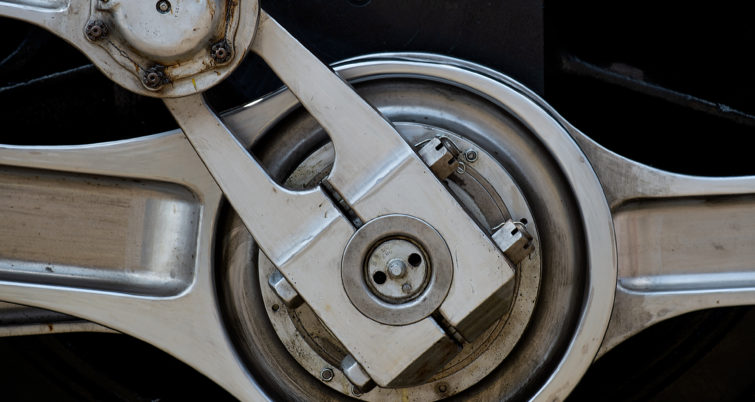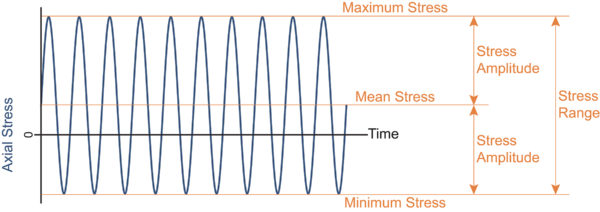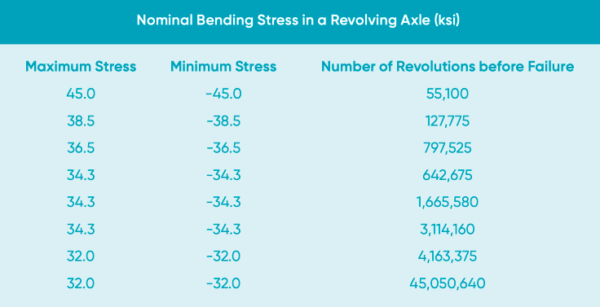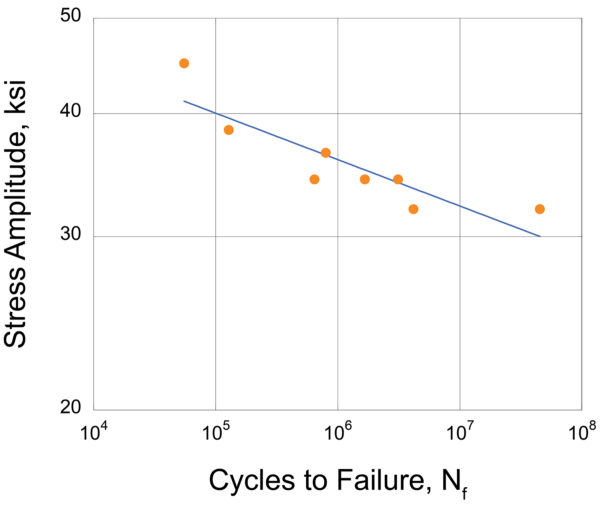Tackling Fatigue Defects in Steel
Written by Gary T. Fry, Contributor
ATLANTA - Railway Track & Structures, February 2024 Issue: Steel is one of the most important materials ever developed. From "A Deeper Look", a monthly column from Dr. Gary T. Fry.
Steel is one of the most important materials ever developed. Its many and varied alloys are widely used as a primary structural material where strength, ductility, toughness, and hardness must be provided at specified levels of reliability. Steel can be produced cost-effectively even in very large volumes—enough to build some of the world’s tallest skyscrapers, longest bridges, and largest railway networks. Steel is among the materials considered infinitely recyclable—recyclable over and over again without any loss of quality. In fact, steels used today in railway rails, railway wheels, and railway bridges are largely produced from recycled scrap that is remelted in electric-arc furnaces. Increasingly, these furnaces and all subsequent steel processing stages are powered using renewable energy sources.
Steel as a constructional material was introduced in the mid 1850s when the Bessemer process was being perfected to produce reliably acceptable steel in large volumes. The first steel railway rails were installed in England in the late 1850s. The first steel bridge, the Eads Bridge, crossing the Mississippi River at St. Louis, Missouri, was dedicated on the Fourth of July 1874 and is still in use today. The first steel skyscraper, the Rand McNally Building in Chicago, Illinois, was completed in 1889.
Over the 170 years that steel alloys have been used as structural materials, we have learned that fatigue crack defects can form under repeated loads. This is true even in steels of the highest possible quality subjected to loading that is well below any apparent material fracture strength. Failure of a component after successfully applying many thousands of seemingly safe loads is probably the most vexing aspect of metal fatigue. Let’s take a deeper look at tackling fatigue defects in steel.
Prior to steel being introduced as a structural material, fatigue failures were observed in iron chain hoists used in German mining operations in the 1820s. The failures were characterized as the metal becoming “tired” and weakened after repeated applications of loads that were considered safe. In the late 1860s, German railway engineer August Wöhler spent a few years investigating steel railway axle failures and performed meticulous repeated load tests on samples of the metal—axle steel from Krupp Steelworks (Wöhler 1870). Prior to publishing his results, Wöhler had presented his work in a small display at the 1867 Paris Exhibition. In addition, the producer of the steel that he tested, Krupp Steelworks—one of the world’s largest producers of steel at the time—had impressive displays at the exhibition and won a grand prize for their unique approaches to steel production.
Though Wöhler did not receive any awards for his display, he did receive substantial recognition in the form of an article in a relatively new periodical: Engineering: An Illustrated Weekly Journal. Of some coincidental interest, the periodical was originally funded by Henry Bessemer, the inventor of the Bessemer process for steel production. The article ended with a prediction.
M. Wöhler’s modest [display] may have been overlooked by ninety-nine out of every hundred professional visitors to the Exhibition, yet we believe ourselves justified in saying that his scientific and patient experiments will be referred to long after the majority of those things which have drawn a shower of medals and ribbons upon themselves at present will be dismissed and forgotten (Colburn 1867).
Indeed, 160 years after those prescient words were written, Wöhler’s work is recognized today as the origin of the modern field of fatigue mechanics. Most notably, Wöhler was the first person to recognize that the range of applied stress cycles (calculated as maximum applied stress minus minimum applied stress) is the primary driver of fatigue failure in metal. Figure 1 illustrates a stress time history applied to a component under uniaxial loading. This stress history is similar in form to the loadings Wöhler applied to his test specimens. In Figure 1, the cyclic stress follows a sinusoidal curve through time and oscillates through a constant range between a minimum stress and a maximum stress. We refer to this type of loading as constant amplitude fatigue. Figure 1 illustrates the five essential features of a constant amplitude stress history: maximum stress, minimum stress, mean stress, stress amplitude, and most importantly, stress range.

A certain type of plot of fatigue test results is often called a Wöhler Diagram. The data for a Wöhler Diagram are the results from constant amplitude fatigue tests during which the mean stress is zero—maximum stress and minimum stress have the same value but opposite sense. The test specimens are nominally identical. For example, Table 1 lists data from one of Wöhler’s original 1867 test series using axle steel from Krupp Steelworks (Wöhler 1870). In this case, a special apparatus designed by Wöhler was used to spin the test specimen while simultaneously applying a constant bending moment—a loading very similar to the loading condition of a railway axle in service.

Figure 2 is a Wöhler Diagram of the data in Table 1. The vertical axis is the stress amplitude, and the horizontal axis is the number of cycles applied that caused failure of the test specimen. It is customary for both axes to be scaled logarithmically—base 10.

With this information, we are in a rudimentary position to tackle the problem of fatigue defects in axles made from the steel that Wöhler tested. Suppose we would like the axles to be able to travel 1,000,000 miles under full load with an acceptably low risk of failing in fatigue, say 1 in 100,000. One way to meet these two targets is to select an appropriate stress amplitude and design the axle so that its maximum bending stress under load does not exceed the selected stress amplitude.
If we assume 36-in. diameter wheels on the rolling stock, the axles must survive 560,000,000 revolutions. Applying basic regression statistics to Wöhler’s data and extrapolating to the target fatigue life of 560,000,000 revolutions, the maximum bending stress in the axle must not exceed 20 ksi. At this value, about one-fifth of the ultimate tensile strength of the steel, fewer than 1 in 100,000 axles will fail to reach 1,000,000 miles of loaded service. Although a simple example, it does illustrate many of the essential features of fatigue design problems.
Since those early days of Wöhler’s inspired work, 160 years of intensive research have greatly improved our understanding of fatigue in metal alloys and other material systems, including timber, various fiber composites, soldered connections in electronics, and more. Detailed models exist that accurately quantify fatigue damage accumulation in these material systems under complex loading conditions, including variable amplitude environmental loadings associated with earthquakes, wind, and waves. Advanced imaging systems are available to inspect fatigue-prone components for the presence of nascent fatigue defects.
Despite the considerable advances, fatigue failures still occur. There remain many research questions and opportunities to develop enhanced fatigue mitigation strategies. But perhaps there is a greater need for basic education and vigilance. Tackling fatigue defects in steel means implementing best practices and being open to lessons learned, even those from the very distant past.
References
Colburn, Zerah (editor). 1867. “Wöhler’s Experiments on the Strength of Metals.” Enginering: An Illustrated Weekly Journal. Vol. 4: pp. 160-161. London.
Wöhler, A. 1870. “Über die Festigkeitsversuche mit Eisen und Stahl.” Zeitschrift für Bauwesen. Vol. 20: pp. 73-106.

Dr. Fry is the Vice President of Fry Technical Services, Inc. (https://www.frytechservices.com/). He has 30 years of experience in research and consulting on the fatigue and fracture behavior of structural metals and weldments. His research results have been incorporated into international codes of practice used in the design of structural components and systems including structural welds, railway and highway bridges, and high-rise commercial buildings in seismic risk zones. He has extensive experience performing in situ testing of railway bridges under live loading of trains, including high-speed passenger trains and heavy-axle-load freight trains. His research, publications, and consulting have advanced the state of the art in structural health monitoring and structural impairment detection.





